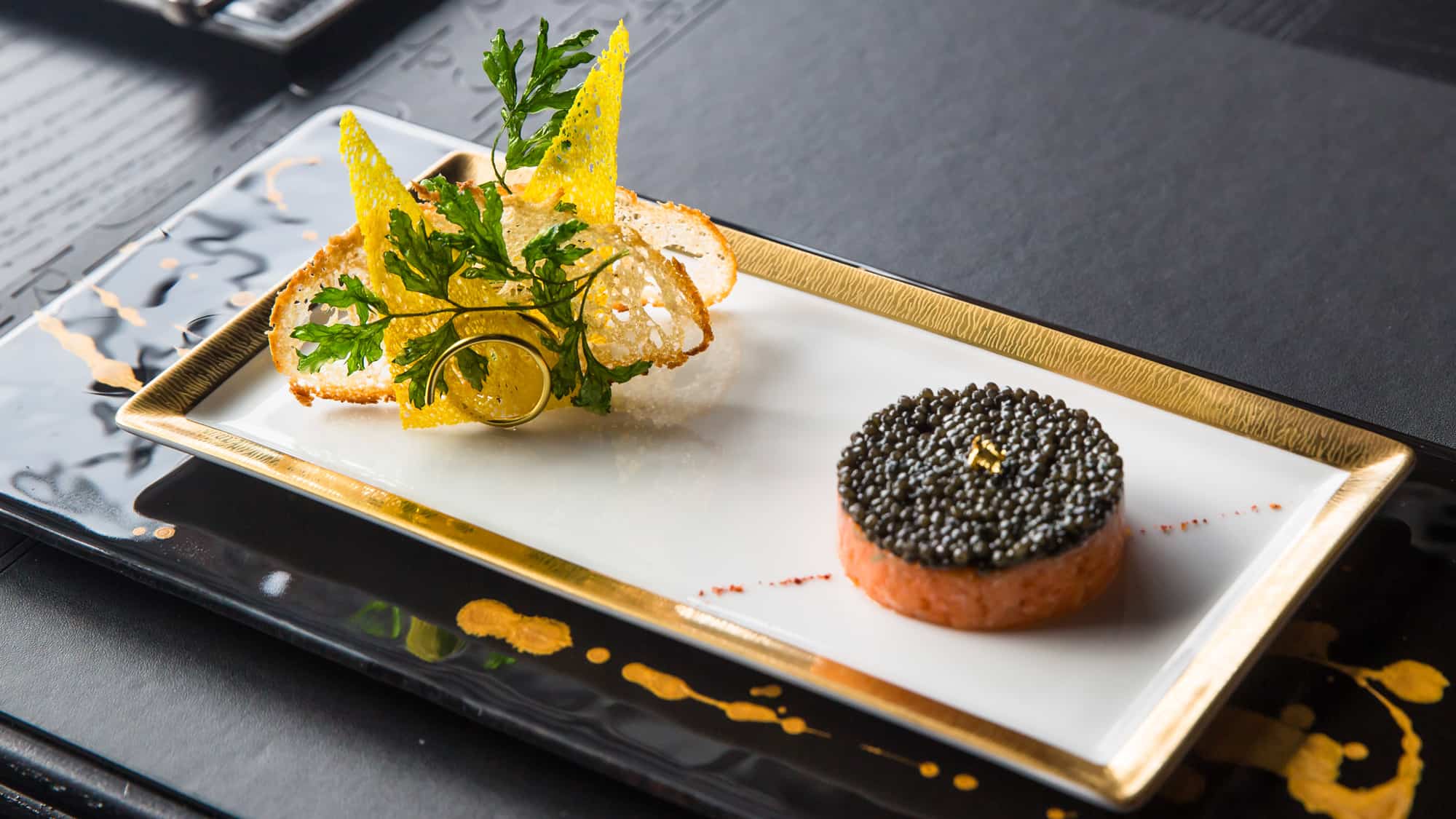
There are many foods out there that are considered a treat by some people in the world, while others think of it as just another snack. But caviar is unanimously considered the most exquisite, fancy delicacy to ever exist in the world. No doubt, caviar is an acquired taste that not everyone enjoys.
But for those who do, or at least for those who are open to trying caviar, we will try to answer all questions you might have pertaining to this decadent treat.
First.. What is Caviar?
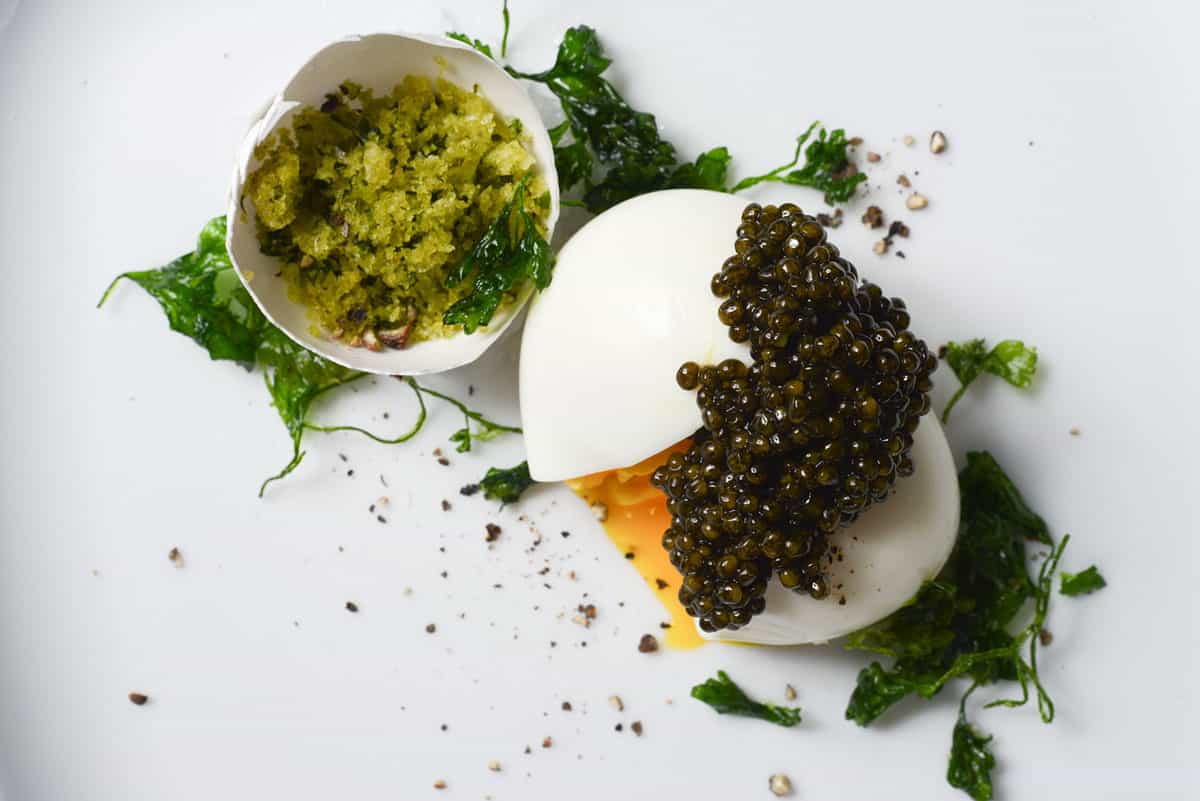
Caviar is considered a delicacy and a luxurious treat by almost everyone around the world. This pinnacle of luxury treats originated from the Black and the Caspian seas, and has been around for hundreds of years. It can be traced all the way back to Ancient Greece, with its name being derived from the Persian word ‘chav jar’, or “cake of strength”.
But caviar was actually introduced to the world by Russian royalty. It is made from fish eggs, and even though there are quite a few varieties available, only the matured eggs collected from the best sturgeon fish family are considered caviar.
The female eggs are called “roe”, and they’re a more affordable alternative to the very expensive caviar. They can be collected from other types of fish such as arenkha, flying fish, kaluga, lumpfish, salmon, or trout, and they are all delicious. If you’re not too particular about where your caviar comes from, it’s nice to try all the different, more affordable types of caviar that won’t break your wallet.
What to Look For
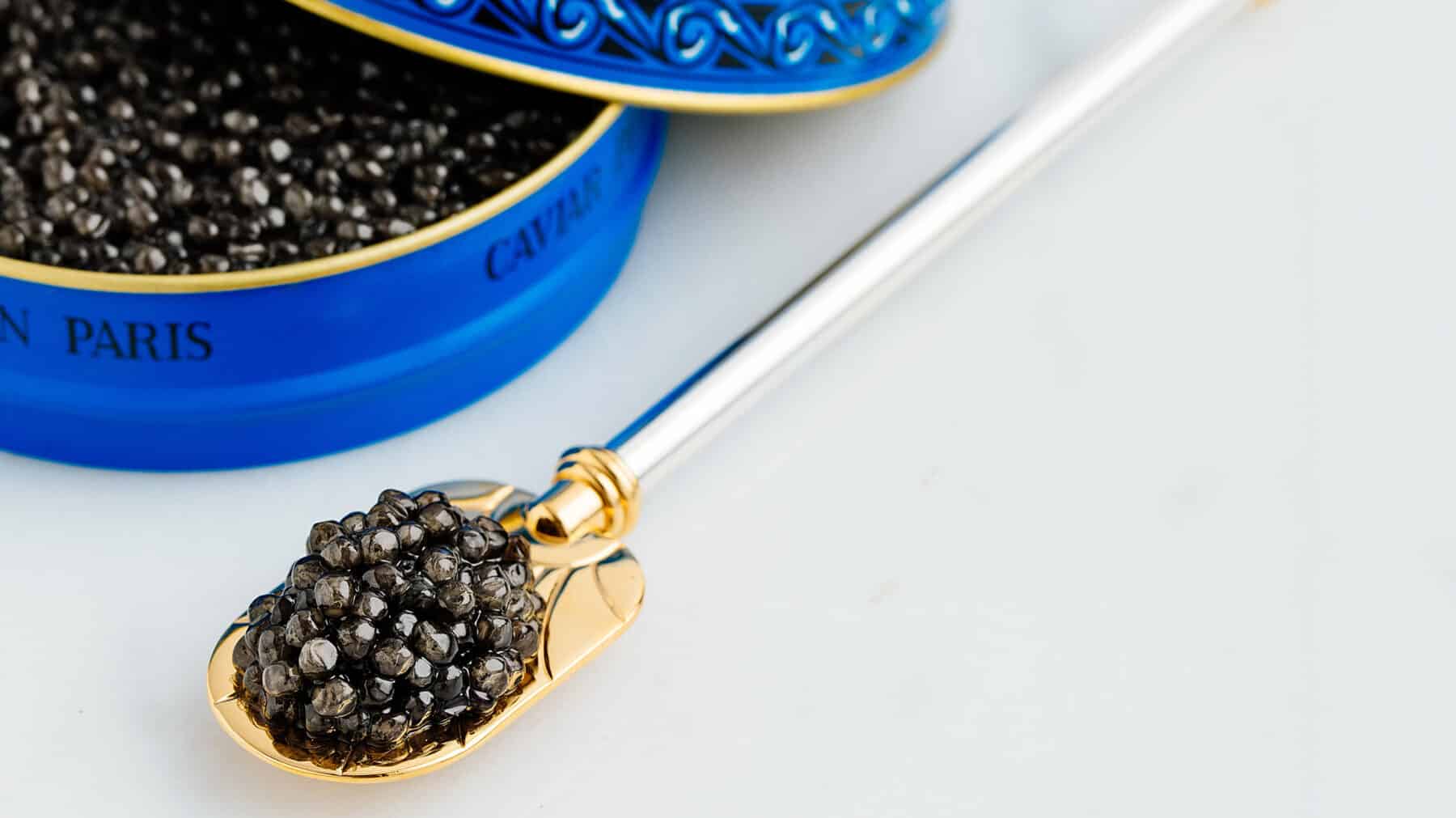
When shopping for caviar, there are a couple of things to keep in mind. Mostly, your budget. Unless you’re the Sultan of Brunei, we’re going to assume that you are not working with an unlimited budget, so take a look at the types of caviar we’ve gathered for you to judge which will fit your lifestyle best.
Then, according to what you set as your limit, the origin and the grade of the caviar is what you need to consider. The rarest Beluga caviar, for example, might not be available in your region, so that’s another thing to keep in mind.
When you’re starting out, a grade 2 caviar, which is more affordable, is a good way to dip your toes into this delicacy. As previously mentioned, it is an acquired taste, so don’t go for the most expensive one as your first try. You might not enjoy it, so why waste your money?
How to Buy Caviar
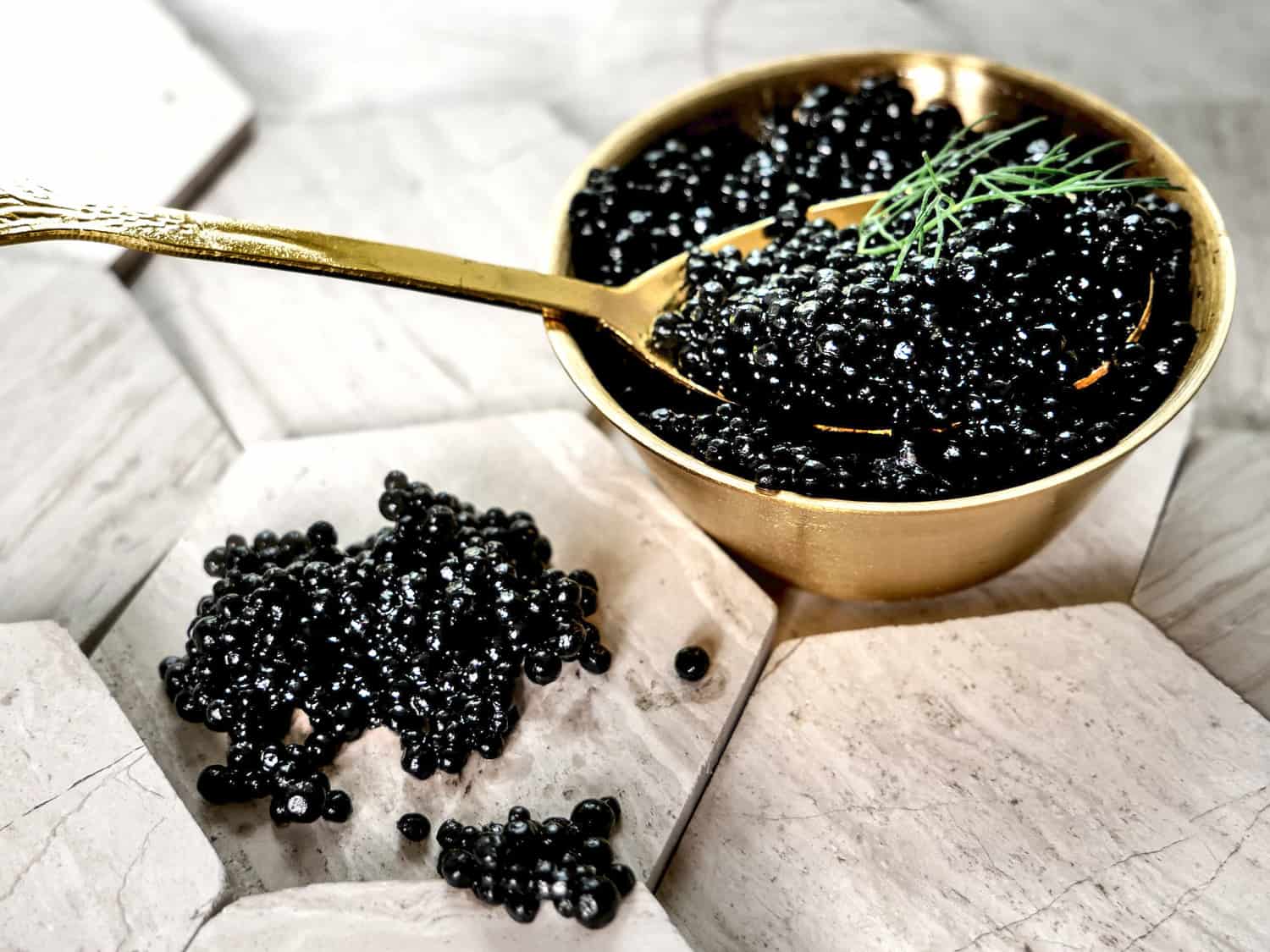
One rule of thumb when buying caviar is to look for a descriptor called ‘malossol’. This is commonly found on the best quality caviar. It implies that the fish eggs were soaked in brine then strained. The lower quality caviar is bundled together in a tin and soaked in large quantities of salt.
Once you get acquainted with both grades, you will be able to tell the difference in the flavor.
Where to Buy Caviar
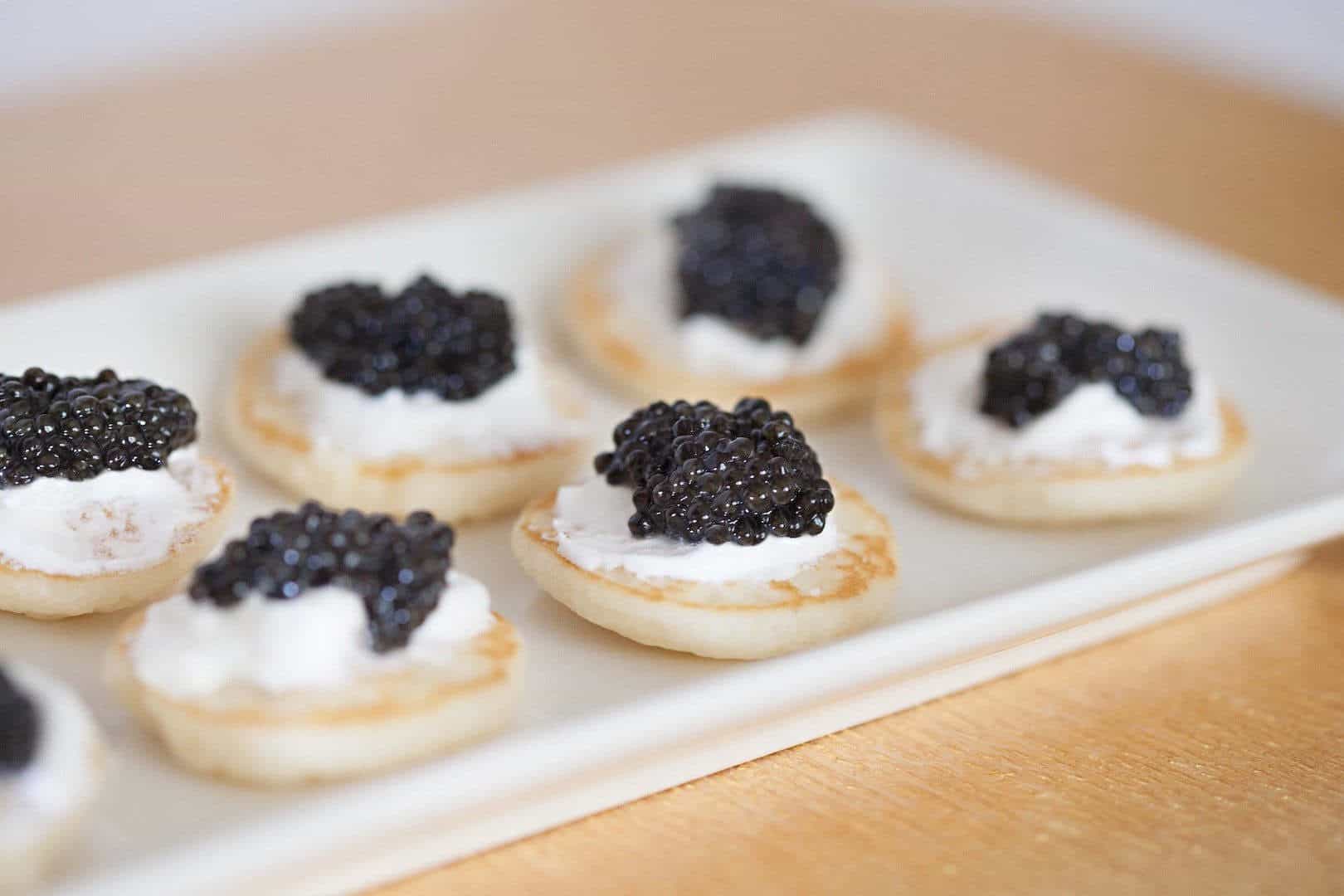
One rule of thumb to remember when buying caviar, regardless of where you are in the world: make sure it originates from farmed stock. There are quite a few countries where buying wild caviar is illegal, hence the importance of knowing what it is you’re buying.
Reputable online caviar houses might be your best option, but you can find local food halls and food specialty stores that sell the ethically sourced caviar. There are also a few sites like The Caviar Co, Fulton Fish Market, Caviar Russe, Petrossian or Sterling Caviar that offer excellent caviar.
Types of Caviar
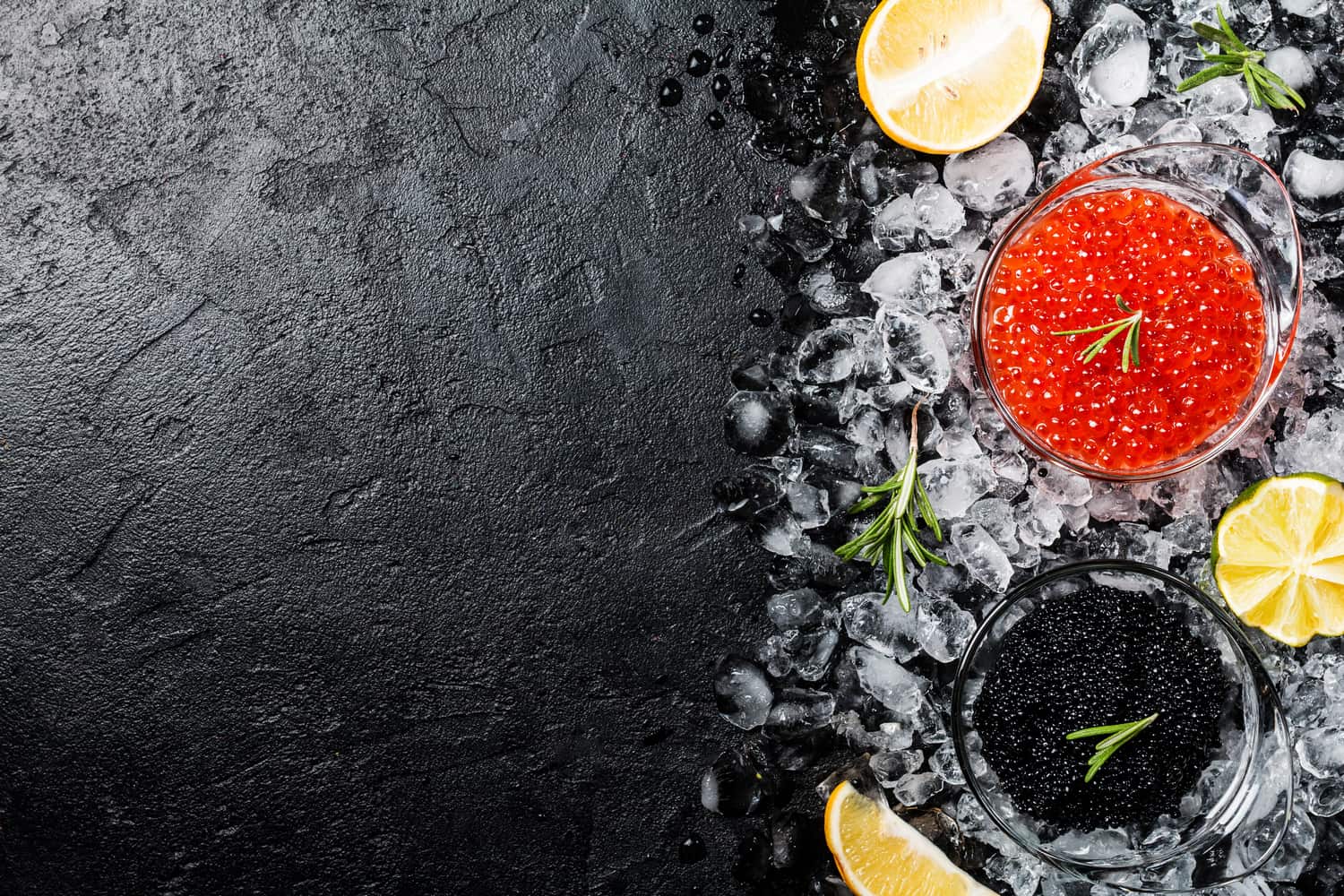
When classifying caviar, the types of caviar only come from sturgeon species. Although roughly a dozen or so types of caviar exist there are really only three main varieties of sturgeon caviar. Namely, Beluga, Ossetra, and Sevruga.
We will look at all of them in some more detail in a little bit, but for now, just get acquainted with how caviar is graded. Based on the flavor, size, and texture of the eggs, the price, quality and taste can be categorized in two grades:
- Grade one consists of more expensive, firm, large, and uniform eggs.
- Grade two, on the other hand, is more affordable, but the eggs are also less uniform and less delicate.
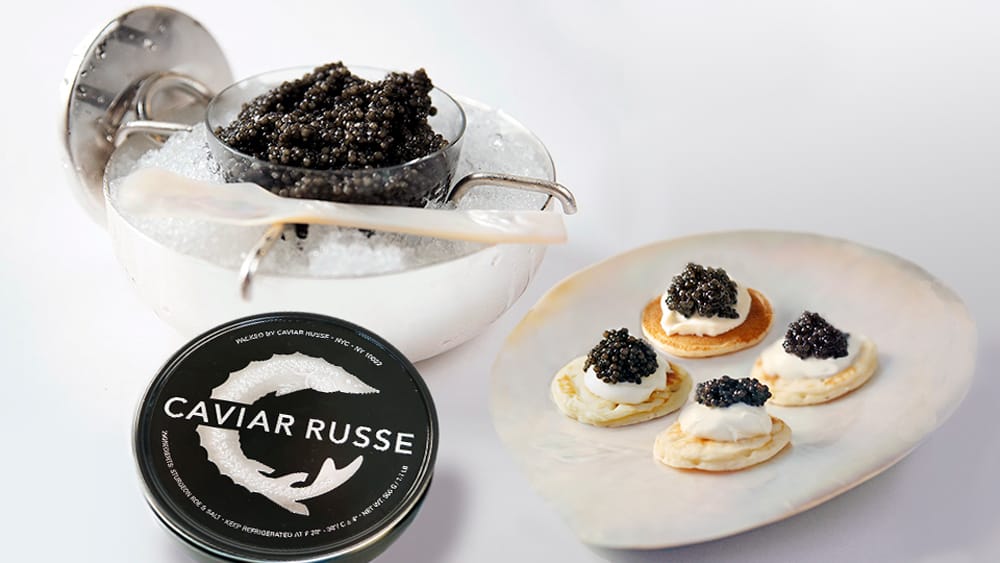
Sturgeon Caviar contains a lot of sub-categories of caviar, depending on where it comes from and its own particularities. Let’s take a look at the most popular ones:
1. Alberta Caviar
Alberta caviar hails from Northern California, and it comes in a range of auburns, dark greens, and vibrant green colors. With an unexpected note of sweetness, it has a nutty flavor with a buttery finish. In order to get the most of its brimy, warm flavor, enjoy it with simple recipes such as foie gras or fresh vegetables.
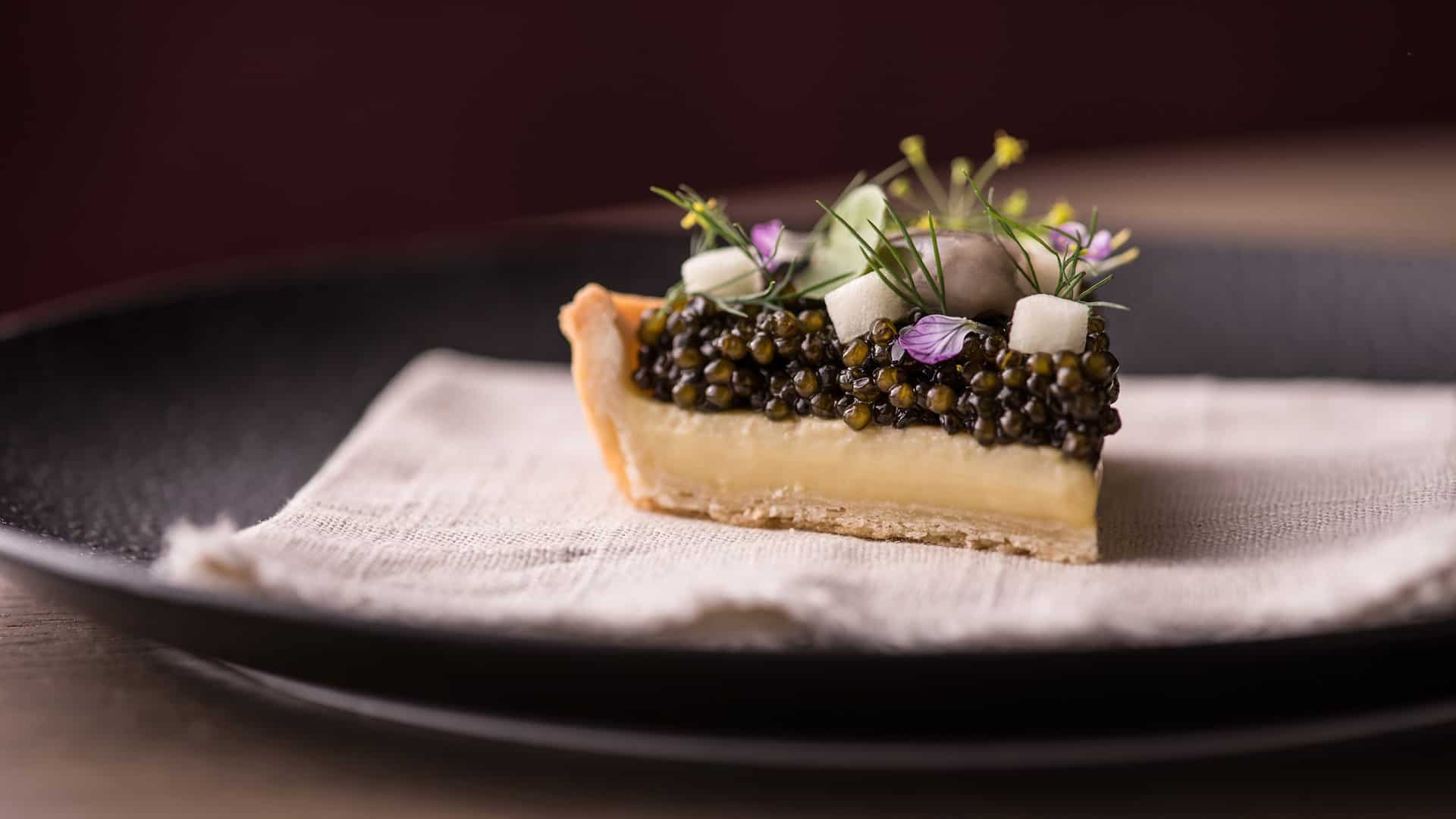
2. Amur Caviar
Amur sturgeon have large eggs that have a sweeter taste when compared to other types of caviar. One particularity worth mentioning with this type is that you get a pronounced “pop” in your mouth when the egg bursts, which is an experience in itself. It also has a nice hue to it that ranges from pale white to khaki green. Fairly affordable, but the most sensual caviar you will find.
3. Baika Caviar
Baika caviar is the world’s darkest colored caviar, ranging from smoky gray to ebony. It originates from the waters of Lake Baikal, in Siberia. For centuries people would seek out its original taste, but today it is raised in various lakes throughout the world.
The fresh taste of these smallish beads is bold in texture, and offers a bright and fruity finish. It can be paired with potatoes, white fish, or even steak, but solo is also great.
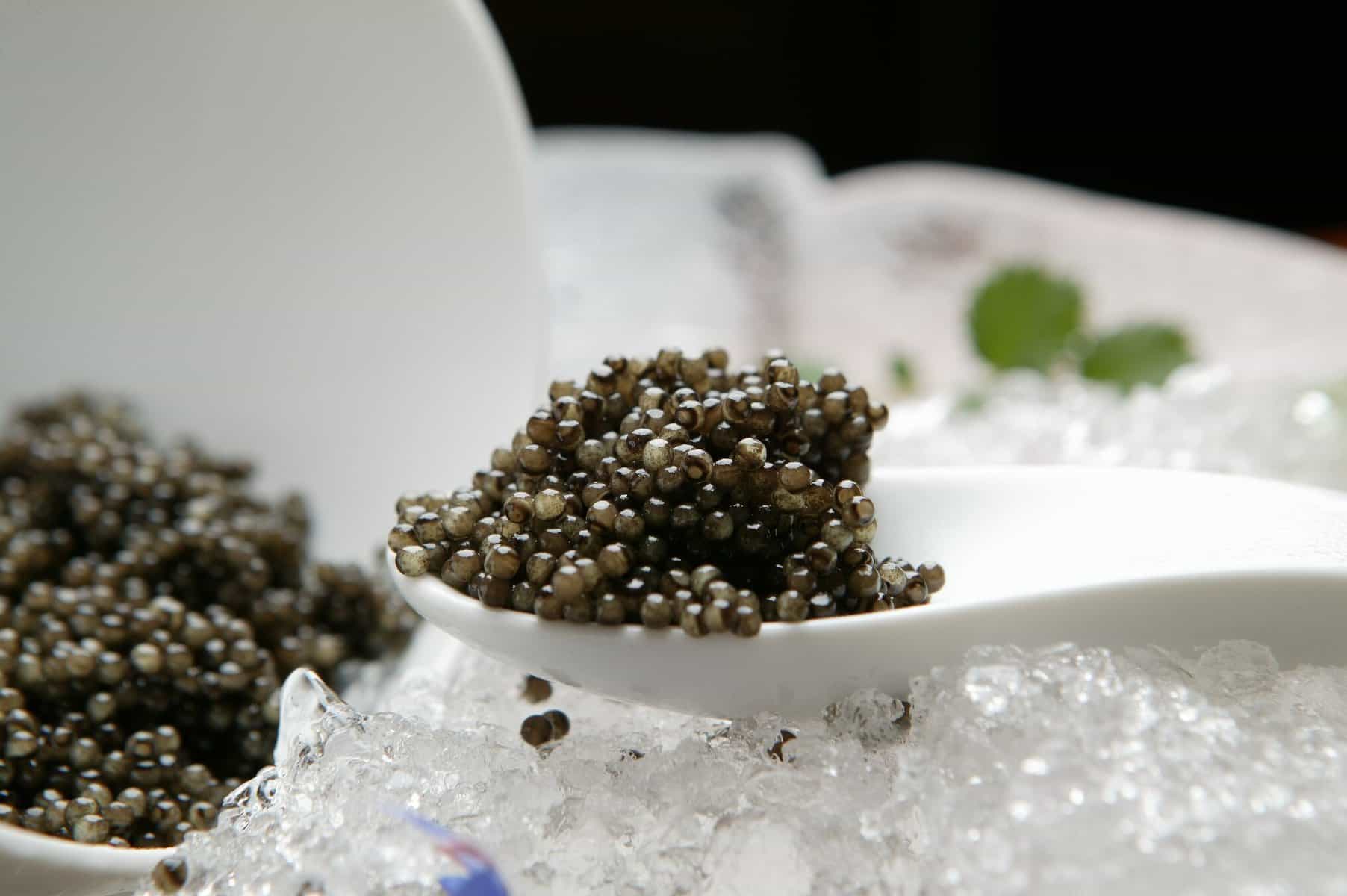
4. Beluga Caviar
Beluga is the most expensive caviar because it is also the rarest. What distinguishes it from other types of caviar is its large pea-sized light gray pearl appearance. The taste is creamy and buttery with a nutty flavor and a unique after-taste that is full flavored.
The reason it is so expensive is that the wild Belugas are in decline. Therefore, due to its rarity, there are highly regulated rules when it comes to this type of caviar. Unfortunately, it is not available in the US, but the Kaluga Huso is a close contender.
5. Daurenki Caviar
Daurenki caviar is a fairly new caviar that is the result of mixing Huso Dauricus and Acipenser Schrenckii varieties of sturgeon fish. It can be identified by its medium to large beads that come in golden-green shades.
This type also offers you that famous ‘pop’ in your mouth that is accompanied by a rich, nutty, and buttery flavor. This is a great type to try for the newbies, but the well-seasoned caviar fans will also enjoy it. It offers high versatility as far as pairing goes. Try it on top of your french fries next time!
6. Kaluga Huso Caviar
Kaluga Huso is a hybrid of the Beluga family, and it is bred in a sustainable, ethical way. With grains that offer a subtle texture and a delicate balance, this type of caviar will give you a sublime experience every time.
Since Beluga is not available in the US, this is the closest you will come to enjoying that particular flavor without flying overseas. Its color depends on grade, and it ranges from bright bronze, golden green, to dark brown and noticeable jade accents. Best enjoyed on its own or with freshly made blinis if you want to let its flavor shine.
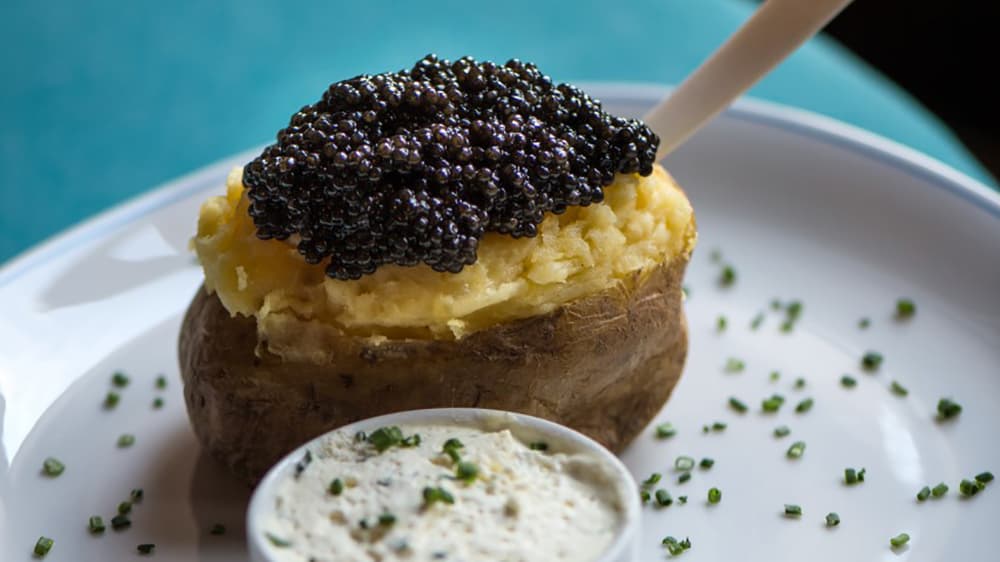
7. Osetra Caviar
Osetra is the most popular type of caviar in the world. While expensive, it is the most affordable high-end caviar you will find. Known for its firm and golden pearl appearance, it has a nutty, briny, buttery flavor and rich taste. A light and mild flavor gives this type of caviar a higher price. It is available in every grade, and it is the type of caviar that boasts a classic taste.
You can definitely enjoy it on its own, but it can also be paired with pasta sauces that have a creamy consistency, or seafood and poultry. When in doubt, go for the Osetra caviar and you will be fully satisfied.
8. Shassetra Caviar
Shassetra caviar, or ‘the kiss of the sea’, is the caviar lover’s favorite type. It is well known for its robust constitution and brilliant and briny seaworthy flavor. Ranging from ginger to emerald green, it has hints of toasted grains and dried fruits. Because of its unique flavor, it pairs really well with a variety of sauces, pasta, fish and several meats.
9. Shovelnose Caviar
Shovelnose, or Hackleback caviar, is mostly popular in the US. Because Americans are known for loving large portions when it comes to food, the affordability of this caviar is the reason it is so widely spread in North America.
Not the most delicate, it is a great option if you’ve never tasted caviar before. When compared to other more sophisticated types of caviar, this places itself towards the lower end of the spectrum.
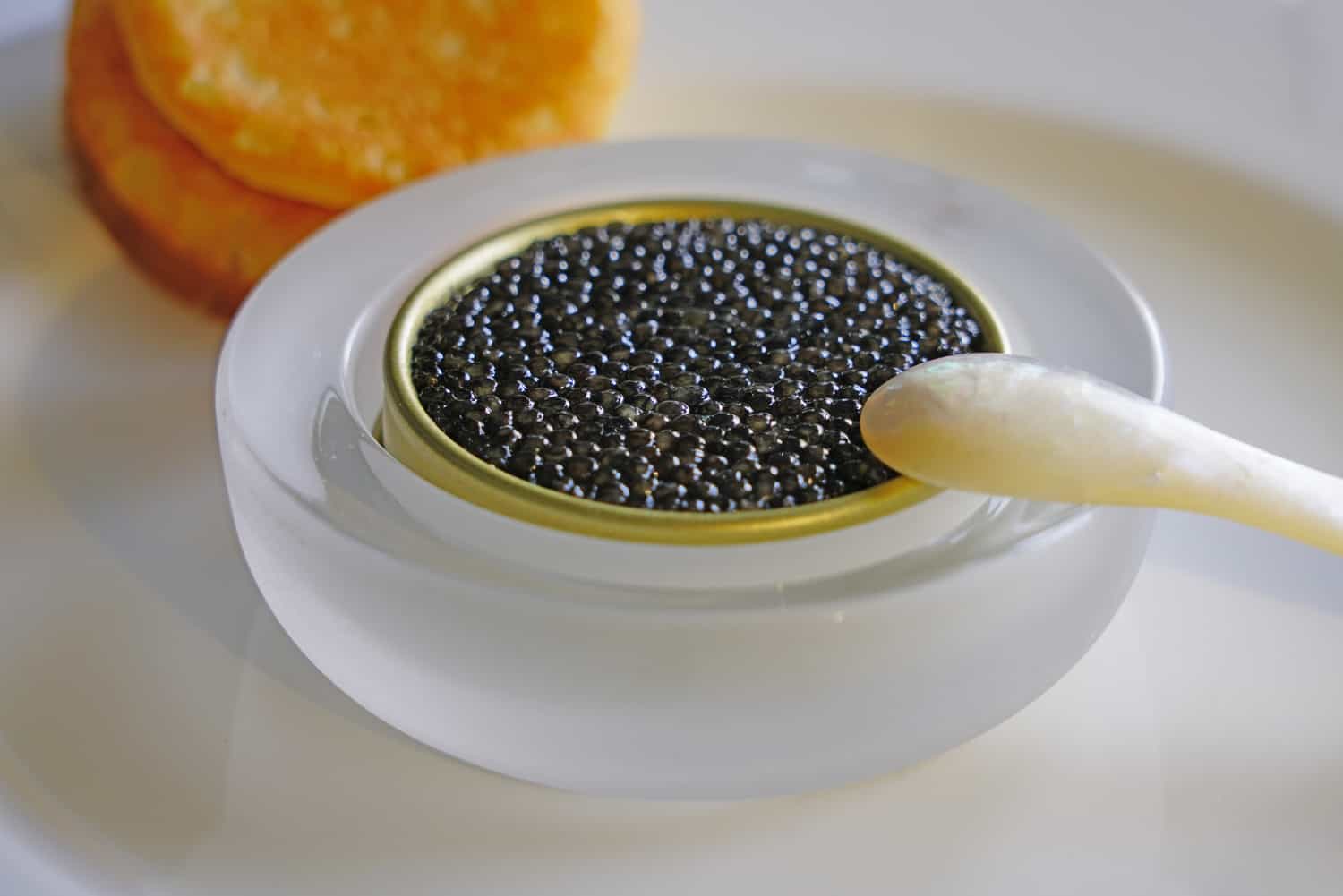
10. Siberian Sturgeon Caviar
Siberian sturgeon roe has smaller eggs and possesses an oyster-flavored, strong sea redolence. If you see the name Acipenser Baerii, then you know it’s the right thing. And due to its potent flavor, it is also more affordable.
11. Sevruga Caviar
Sevruga is the most common and affordable of the caviars. It also has a very rich and intense flavor that is characterized by a buttery, smooth texture. The pearls in this case are smaller, with a clear light-gray coloring.
12. Transmontanus Caviar
Transmontanus caviar comes from a white sturgeon that is native to California. If you’re a lover of the savory pop in your mouth, you will love Transmontanus caviar. With a buttery, robust and smooth texture, it offers a clean finish on your palate. Ranging from dark hazel to sage, its consistent mild flavor makes it easy to pair with most foods.
Serving Caviar
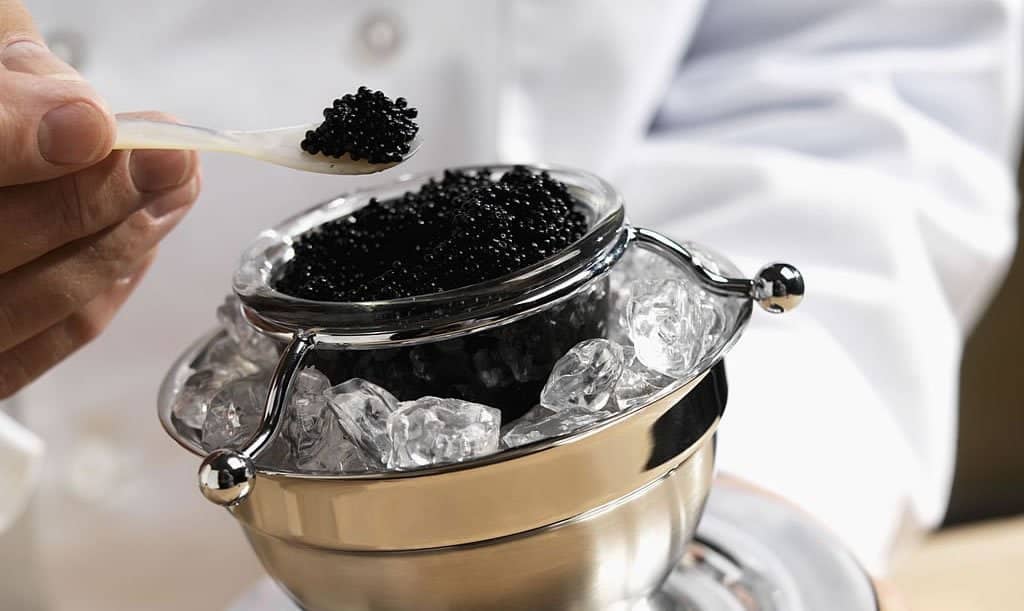
The best way to enjoy caviar is the easiest, simplest way imaginable: alone, with a spoon. Typically, caviar is served on a bed of ice, and the spoon used is made of either mother-of-pearl, glass, or ceramic. You should never use metal utensils with caviar, as they alter the taste and properties of this appetizer.
Of course, most places you go to order caviar will probably offer it with unsalted crackers, toast points, or Russian blinis. In case you don’t know what blini is, it’s a pancake that is made from buckwheat and pairs well with smoked salmon or caviar. Whereas most pancakes are sweet and can be accompanied by jam, honey, or maple syrup, the blinis go best with savory, strong flavors.
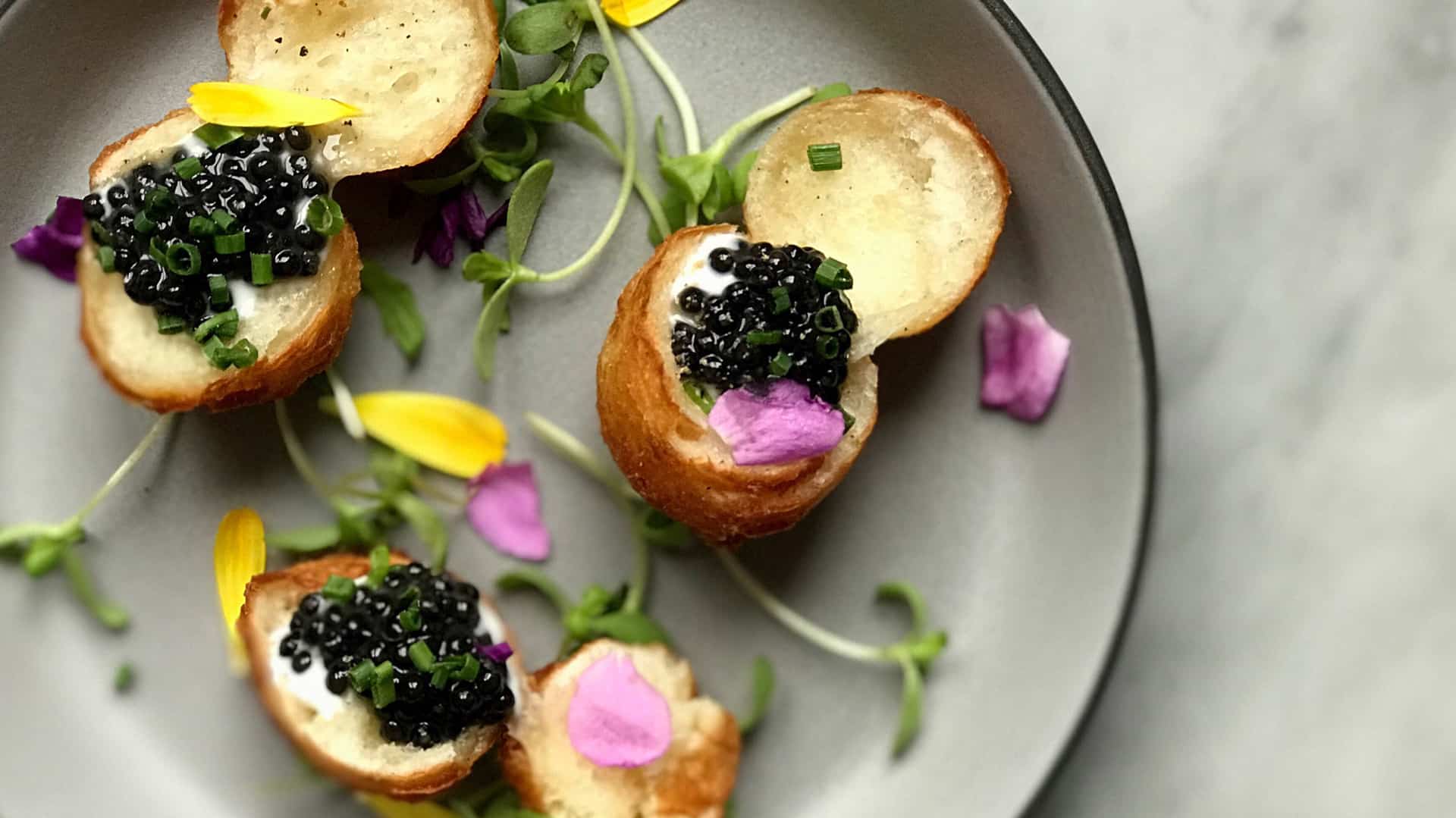
Caviar is generally considered an hors d’oeuvre, or appetizer. Not only because it is so expensive, but also because of the rich taste and texture. The true caviar aficionados do not chew it, rather place it on the tongue and spread it around the mouth. The bites should be small, about a half a teaspoon portions in order to really savor it. And in this case, less is more!
In order to get the most out of your experience, try to avoid excessively handling the caviar, so it doesn’t become oily. If possible, encase the caviar on top of ice in order to maintain its crunch and freshness. Some accompaniments such as egg whites, gherkins and capers will spoil the delicate balance of the caviar.
Pairing Caviar
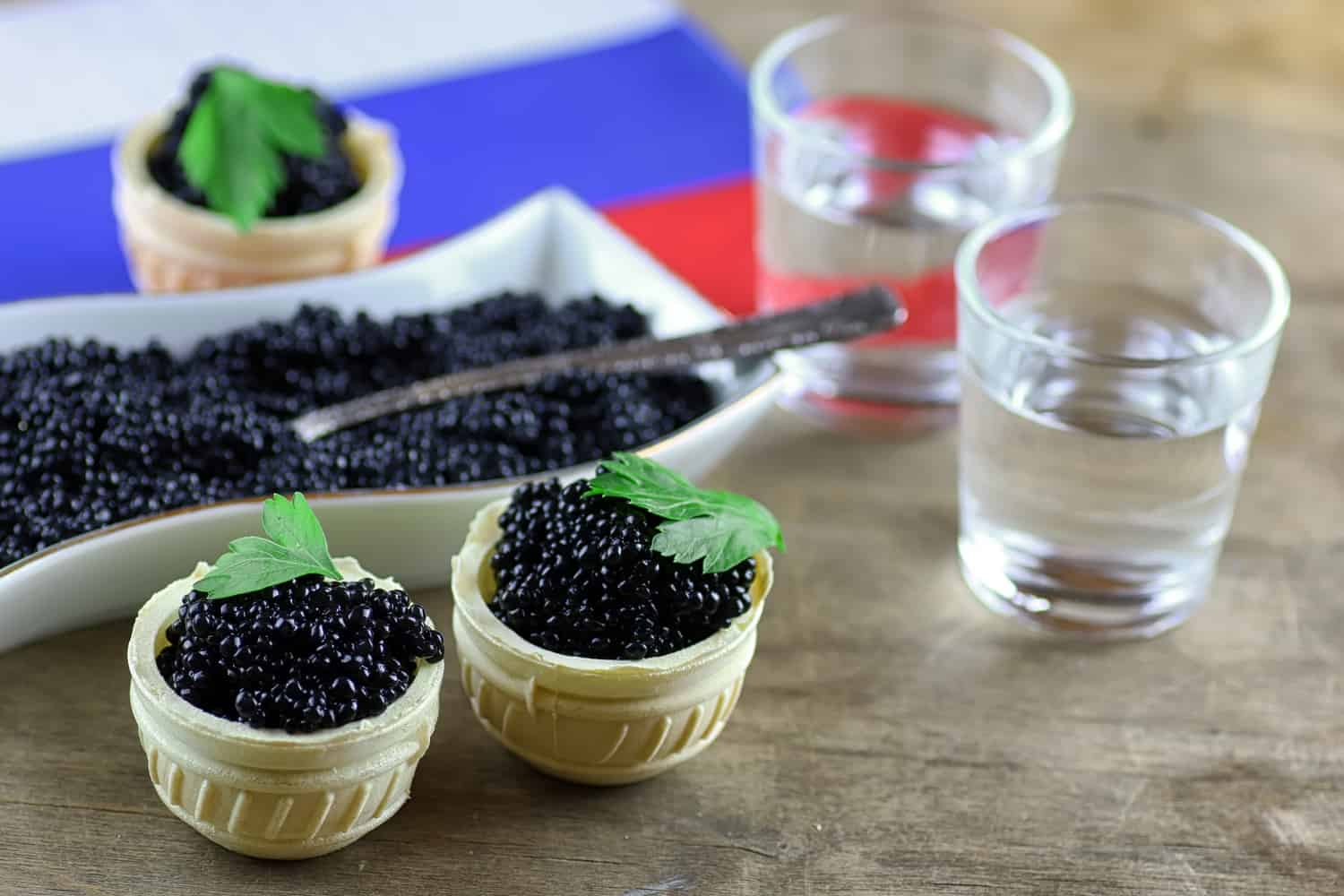
As far as pairing caviar with alcohol, there are a few varieties of wines that go really well with it. But, in all honesty, a cold, frozen premium shot of vodka is even better. The light characteristics of the vodka bring out the salty seafood flavors of the caviar.
Champagne is also an excellent accompaniment to caviar, and the two paired together are considered a royal treat.
Remy Martin cognac is also another option to enjoy with this rich, decadent treat.
Storing Caviar
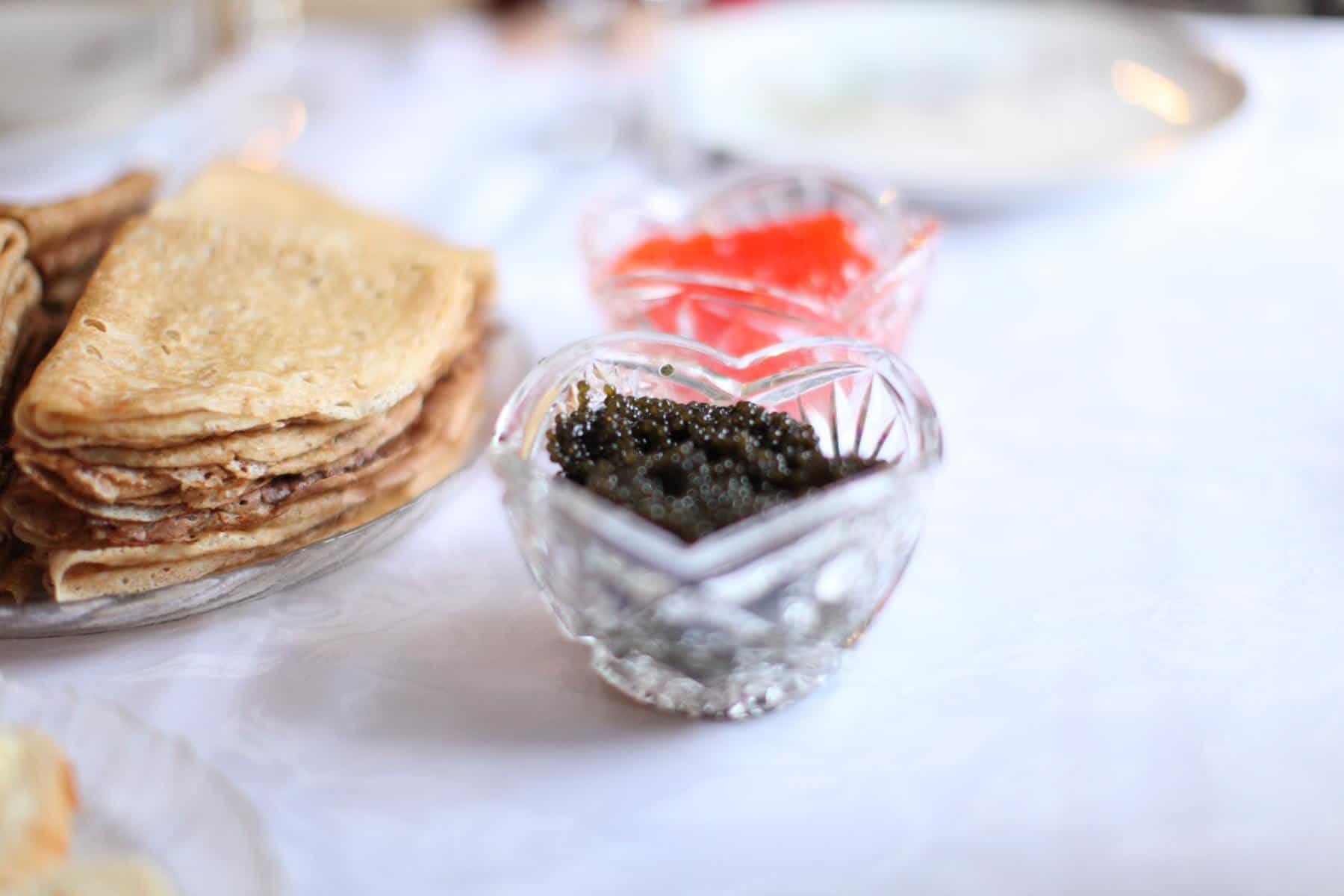
As most seafood fares, caviar is best enjoyed fresh. If you opt for the tin variety, it should also be consumed in one sitting. Once air gets to it, it will not only affect the taste, but it can alter the taste, and it can even make you sick.
If you cannot eat it all at once, make sure it is sealed properly with plastic wrap and placed in the coldest part of the fridge. But try to finish it within three days at most. If the can is unopened, it keeps for about two weeks.
We hope you enjoyed this little lesson on Caviar. If you were fairly new to it, maybe this guide enticed you to give it a try. But even the connoisseurs can always learn something new, so let us know if we missed something. Enjoy your newfound culinary experience!












